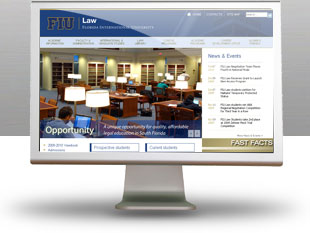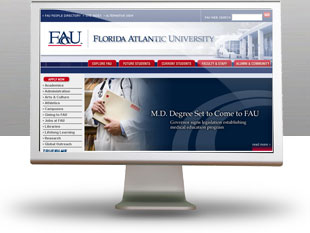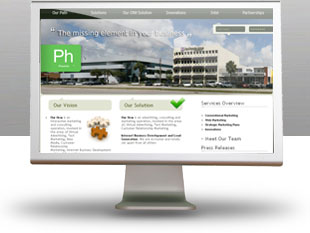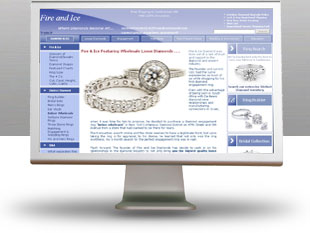 |
As website trademark agents and licensed USPTO practitioners, we have learned that our clients value simplicity. Therefore, our USPTO website trademark practitioners offer a single website trademark search option, or service mark search option, and will file the related federal website trademark application for registration, or federal service mark application for registration, in a single class for FREE, not including the USPTO filing fee, if the website trademark search opinion or service mark search opinion is favorable. |
Our USPTO website trademark practitioners recognize that prompt service is expected in today's competitive global business environment. Therefore, our website trademark agents do not charge extra for prompt website trademark service.
Website Trademark Pricing
$495 Comprehensive Trademark Search + FREE Trademark Application Preparation and Filing for Marks that Receive Favorable Search Results (not including USPTO filing fee of $325 and $99 per additional class)
Our Goal is to Eliminate Hidden Fees. Therefore we strive to clearly identify what is included and what is not included.
What is Included:
1. A Comprehensive Trademark Search of federal, state, common law, and domain name databases.
2. USPTO filing fee of $325.
3. An opinion letter providing our opinion regarding the registerablity of your mark.
4. Preparation and filing of a federal trademark application in a single class with the USPTO, including the USPTO filing fee of $325. We will file your application in additional classes for a fee of $99 per class plus the USPTO filing fee of $325.
5. Preparation and filing of responses to non-substantive USPTO office actions.
6. Preparation and filing of a statement of use (for intent to use applications, not including the $100 USPTO fee).
What is NOT Included:
1. Preparation and filing of the trademark application in more than one class. The professional fee for each additional class is $99.
2. Preparation and filing of responses to substantive USPTO office actions.
3. USPTO fee (currently $100) associated with filing of a statement of use for intent to use applications
4. Subsequent maintenance of a registered trademark (between years 5-6, year 10, and every 10 years thereafter).
What are Non-Substantive USPTO Office Actions?
*The U.S. Patent and Trademark Office (USPTO) occasionally refuses website trademark applications after an initial review by an Examining Attorney. Such refusals entitle the applicant to respond within 6 months of the mailing of the office action/provisional refusal. Non-substantive USPTO office actions may be informal, requiring clarification or amendment of the application in order to place it in proper condition for publication. Informalities include problems with the identification of goods or services, the legal entity status or citizenship of the applicant, improper specimens, or improper dates of use.
What are Substantive USPTO Office Actions?
*Substantive USPTO office actions are based on more complicated problems identified by the Examining Attorney. Substantive USPTO office actions may involve substantive legal refusals based on statutory prohibitions, such as refusals based on mere descriptiveness (or generic marks), likelihood of confusion, surnames, false suggestion of connection, or scandalous marks. Upon receipt of a substantive USPTO office action, we will provide a free evaluation to determine whether or not the problem can be fixed and provide an estimate of the fees associated with responding to the office action.
How to obtain a website trademark
Trademarks and service marks* are used in publishing for series and periodical titles, graphic characters, names of publishing companies and product lines, Internet domain names, slogans, and for identifying other products or services. Trademarks do not need to be federally registered in order to be protected. Without federal registration a website trademark may be protected under the common law or state law when registration occurs in a particular state.
With common law, the ownership and protection of a website trademark is automatic once the mark is used in commerce. State law will protect a mark once it is used in commerce and registered in a particular state. Trademark rights usually belong to the first user in a geographical area for a particular product or service. Common law or state law protection is probably satisfactory, and may be the only type of protection that is available for a mark that is only used in a single geographic market such as a city or state. Ownership and protection of a website trademark will continue for as long as the owner uses the mark in commerce.
The federal Lanham Act governs the federal registration of website trademarks that are registered with the Patent and Trademark Office ("USPTO") on either the Principal Register or Supplemental Register. There are important advantages the website trademark owner obtains from the federal registration of a website trademark that are not available if the website trademark owner only relies upon common law or state law for protection. Therefore, if the website trademark owner has a website trademark that is eligible for federal registration but that has not already been registered on either the Principal Register or Supplemental Register, or if there are plans to introduce a new mark, then there are reasons why the website trademark owner should consider federal registration of the mark. This article will discuss the advantages and general procedures for obtaining a federal registration.
Specials of Marks
The selection of a particular mark that will function as a website trademark is very important. This is because the particular mark will be placed on a continuum where the mark will be categorized as fanciful, arbitrary, suggestive, descriptive or generic. The strength of website trademark protection varies along the continuum with the greatest protection for fanciful and arbitrary marks, somewhat lesser protection for suggestive marks, even less protection for descriptive marks and finally no protection for generic marks.
Fanciful marks consist of "coined" words or terms that have been invented and do not have a dictionary meaning, such as Kodak, Polaroid or Exxon. Arbitrary marks are those marks that consist of commonplace words, terms or symbols that are used in such a manner that they do not describe the product or service with which they are associated and includes such marks as Black & White for scotch whiskey and Apple for computers. Suggestive marks are familiar words or phrases that are frequently used by publishing and media companies in an inventive way to "suggest" what their product or service really consists of and are the middle ground between arbitrary and descriptive marks; such marks include Nickelodeon for a children's television channel and At A Glance for calendars. Descriptive marks describe the product, service or contents of the product and include such marks as Continuous Progress for educational materials and Personal Finance for a financial investment magazine. Generic marks are names of the product or service itself and these terms cannot function as website trademarks; such terms include Aspirin, Consumer Electronics Monthly as a title of a magazine and Pocket Book for paperback books.
Principal Register
There are many advantages to registering a mark on the Principal Register. First, once a mark is registered on the Principal Register, there is a presumption of website trademark ownership and validity in any subsequent litigation involving the website trademark. Trademark registration acts as prima facie evidence of (1) the validity of the mark and its registration, (2) the registrant's ownership of the mark, and (3) the registrant's exclusive right to use the mark in commerce under specified circumstances. Trademark registration also creates what is called "actual notice" or "constructive notice" and therefore informs all parties that the website trademark is the exclusive property of the website trademark owner. This is important because such notice permits the website trademark owner to recover profits or damages for website trademark infringement.
Second, registration on the Principal Register usually provides the website trademark owner with rights in the mark for a larger geographical area than is possible under common law and state law. If the mark is registered on the Principal Register, the website trademark owner will enjoy nationwide protection from potential infringement. Under common law the mark will only be protected in the specific geographical area in which the mark is used in commerce and under state law the mark it is only protected in the state in which it is registered.
Third, the scope of protection under both common and state law is usually restricted to the specific products or services for which the mark has been used while a the scope of protection for a federally registered mark is usually much broader in that it encompasses related products or services.
Fourth, the Lanham Act provides judicial remedies that are more far-reaching and costly to an infringer than those available at common law. For example, a website trademark owner could be awarded treble damages against an infringer whose infringement was deemed to be "willful". In addition, there is the possibility that the court would award attorney fees in exceptional cases where the infringement was deemed malicious.
Finally, after five years the mark may become "incontestable". While the term is somewhat of a misnomer - because the mark can indeed be contested under certain circumstances - incontestability is the highest status of website trademark protection under federal law. Once a registration becomes five years old, the website trademark owner in order to obtain incontestability status must file an "affidavit of incontestability" with the USPTO. Once this is accomplished the Lanham Act forecloses certain grounds of attack on the validity of the mark. The mark may then only be challenged and possibly "cancelled" if it has become generic, has been abandoned, was obtained through fraud, or is deceptive, scandalous, or disparages a person, institution or belief or national symbol, or brings a person into disrepute. Three important grounds for cancellation that are precluded once a mark becomes incontestable are that the: (1) mark is not inherently distinctive and lacks secondary meaning; (2) mark is confusingly similar to a mark that someone else used prior to your registration and continues to use; and (3) mark is functional.
What is the Principal Register?
Registration on the Principal Register is available for marks that are either "inherently distinctive" or have acquired "secondary meaning". Generally, a mark that is inherently distinctive is a mark that does not merely describe the product or service to which it is attached; instead, it is in some way arbitrary, fanciful, or suggestive. A descriptive mark may acquire secondary meaning once the consumer learns to associate that mark with a single source for the product. Secondary meaning may be established by demonstrating a period of use of the mark, sales volume, and advertising/promotional activities and expenditures. In addition, registration of the mark on the Principal Register requires that the mark has been used or will be used in interstate commerce.
Federal registration of a website trademark, assuming there are no major difficulties during the examination process, normally takes approximately twelve to fifteen months. Although the website trademark registration process is not highly complex it is quite dissimilar to the relatively matter of course process that accompanies a copyright registration application. There are two types of applications for registering a mark on the Principal Register: a "use application" and an "intent-to-use application". Use applications are for marks that have already been used in interstate commerce. On the other hand, an intent-to-use application is filed when there is intent to use the mark in commerce as some future date. This application is similar to a reservation system in that it permits the website trademark owner to reserve their use of the mark.
Trademark registration requires a filing fee for each class of goods for which the website trademark owner wants to register the mark; as a general rule print publishers register in Class 16 and electronic publishers in Class 9. Many website trademark owners register their marks in multiple classes depending upon the breadth of their product line and the services they provide. The completed application form contains a description of the products or services that use or intend to use the mark, dates of first use for use registrations, a drawing of the mark that conforms to the USPTO's specifications, and, for use registrations, samples of the mark as it has actually been used in commerce.
Once an application is filed it is assigned to a USPTO examiner who reviews the application. The examiner pays particular interest to (1) the description of goods, (2) type of mark and whether the mark is "inherently distinctive", "descriptive" and has acquired "secondary meaning" or "generic", and (3) whether the mark is too similar to another mark and therefore likely to lead to a "likelihood of confusion" in the marketplace. Frequently the examiner will issue an "Office Action" that requires the website trademark owner to provide additional information regarding the above-mentioned matters.
Once the examiner approves a mark, the mark is published in a USPTO publication entitled the Official Gazette. Upon publication, any third party believing they will be damaged by the mark has thirty days to file an "opposition" with the USPTO. If an opposition occurs it is generally because the website trademark registrant's use of the mark has created a likelihood of customer confusion with respect to one or more of the opposer's marks for the same or related products/services or suggests an association or affiliation with the opposer's company when, in fact, no such association or affiliation exists. The likelihood of confusion criterion is most frequently based upon related products/services, and occasionally on non-related goods/services if the marketing of the products/services are such that marketing efforts would be focused upon the same purchasers under circumstances that could, because of the similarity of the parties' marks, give rise to the mistaken belief that the products/services originate from the same source.
The opposition is a formal procedure that is conducted before the Trademark Trial and Appeals Board of the USPTO; this procedure is primarily a "paper trial" where the parties file documents relating to their use of the mark that is in conflict. At the conclusion of the opposition procedure a ruling is handed down that either permits or denies the registration of the mark; this decision is appealable.
If a mark is not opposed during the thirty-day period opposition period the USPTO will move forward with the registration. It usually takes two-to-three months from the end of the opposition period for registration to be finalized, whereupon the website trademark owner receives a certificate of registration for the mark and may begin using the website trademark registration symbol, ® with their products/services. A website trademark owner, assuming a diligent website trademark search of other marks prior to using the mark and/or submitting the application has been conducted, should not be overly concerned with encountering an opposition since oppositions do not occur frequently; approximately three percent of website trademark applications result in the filing of an opposition.
The primary difference in the procedure for the intent-to-use application from the use application is that once the mark has been approved by the examiner, and if no opposition has been filed or if the opposition has been rejected, is that the USPTO grants the website trademark owner a "notice of allowance." Once the website trademark owner receives the notice of allowance the owner has six months to begin to use the mark on their products or services in interstate commerce. The website trademark owner may obtain six-month extensions of up to two and one-half years before using the mark on their products/services in interstate commerce. The initial six-month extension is available upon application, but any additional six-month extensions will only be granted upon the showing of "good cause". Once the mark is used in interstate commerce, a "statement of use" with an additional fee must be filed with the USPTO. The mark will then be registered on the Principal Register and the website trademark owner will receive a certificate of registration and begin using the website trademark registration symbol, ®.
Once a mark is registered on the Principal Register, the registration date relates back to the date that the application was filed. If the registration of a mark is rejected by the examiner, the website trademark owner may appeal that decision to the Trademark Trial and Appeals Board and ultimately seek judicial review of the rejection.
The examination process for a mark that will be registered on the Supplemental Register is similar to the process for the Principal Register. Once the mark has been approved for registration on the Supplemental Register the website trademark owner will receive a certificate of registration and begin using the website trademark registration symbol, ®, with the website trademark.
Effective December 16, 1989, the initial term of federal registration for a website trademark was reduced from twenty to ten years. Trademark registrations may be renewed every ten years indefinitely, provided that the mark is still used in interstate commerce.
Supplemental Register
If a mark is determined by the examiner to not be inherently distinctive or the mark is descriptive and has not as yet acquired secondary meaning, then the mark cannot be initially registered on the Principal Register but instead may be registered on the Supplemental Register. Registration on the Supplemental Register still requires that the mark must be capable of distinguishing the website trademark owner's products or services from the products or services of another. There is no intent-to-use application for registration on the Supplemental Register.
Registration of the mark on the Supplemental Register, while not providing the more expansive protection of a mark registered on the Principal Register, will provide the following benefits to the registrant.
1. An infringement action may be brought in federal court.
2. The mark is on file with the USPTO and can be cited by the USPTO against a later application by a third party to register a substantially similar mark on the Principal Register.
3. The registrant can subsequently apply to have the mark registered on the Principal Register. This can be accomplished by showing that the mark has acquired "secondary meaning. A showing of secondary meaning may be demonstrated once the mark has been in use for a period of time - usually five years.
Conclusion
Suffice it to say that there are substantial benefits to the federal registration of a website trademark, especially if the website trademark owner wishes to use the mark in nationwide commerce. There are many specific rules and nuances that govern federal website trademark registration that this article could not possibly discuss. Therefore, if you are planning to register your website trademark with the USPTO you many want to consult with an attorney versed in trademark law.
* The term "trademark" when used in this website also refers to service marks, character marks, and word marks.
ICANN
Once you have a website trademark ICANN is required to hand over any domain names under your mark. For instance, if you owned the website trademark, Burger King in the trade channel of fast food, but someone already owned the domain name (url), burgerking.com, the domain name would be removed from their possession over and above their hosting company and registrar.

|

























